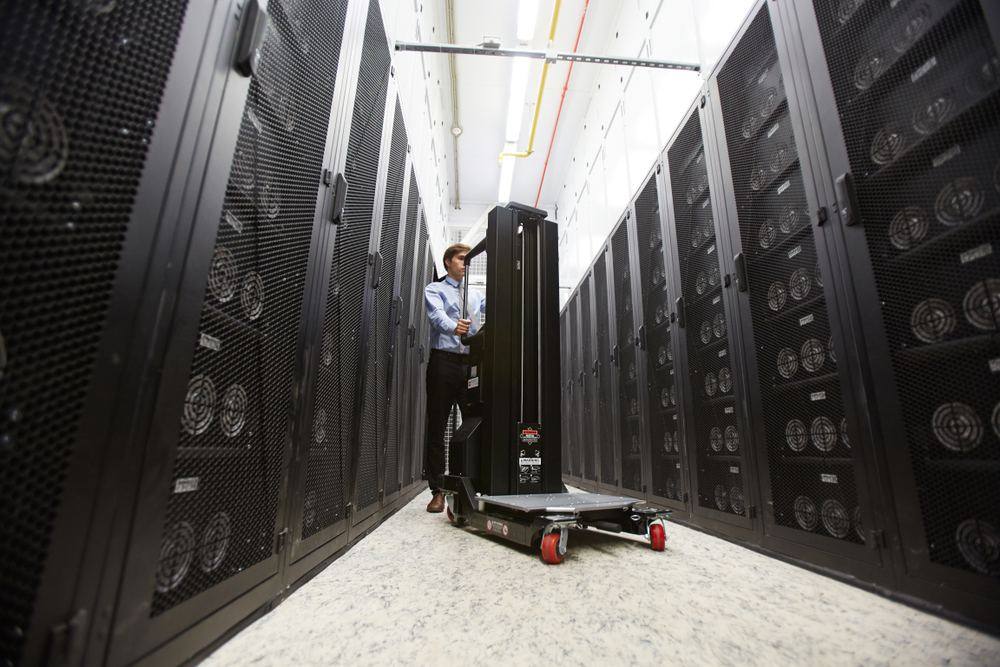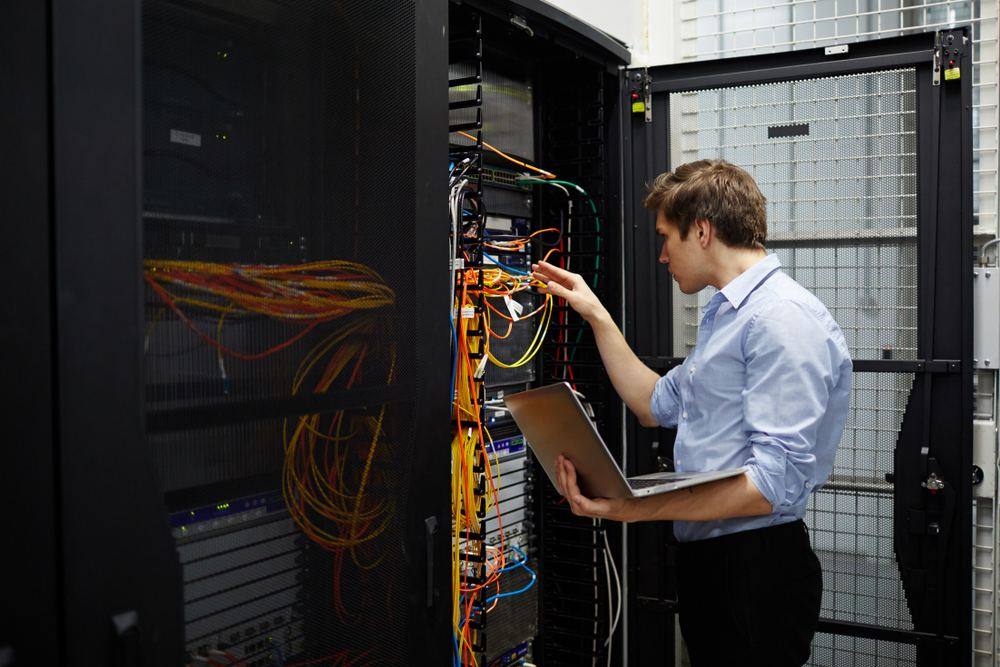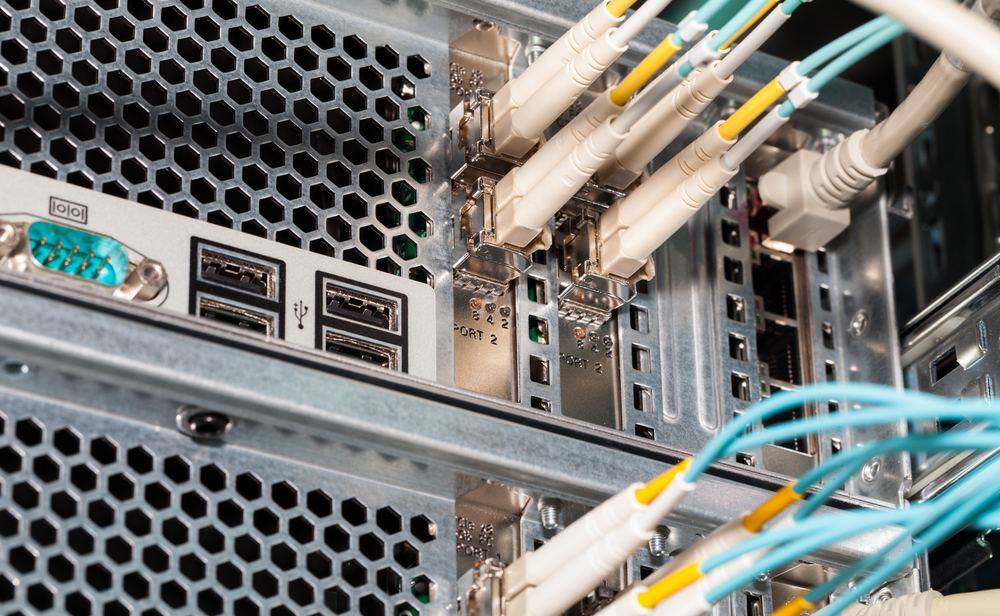IT Relocation Support Services in London

The shift to remote working and hybrid offices is prompting a growing number of businesses to relocate. Hefty rental prices in the capital may also be contributing to the shift. And if you’re moving computers and servers, it’s advisable to seek the help of professional IT relocation support services in London.
Whilst it may seem like a simple task to relocate your IT system, there are plenty of things that can go wrong. For example, do your new offices support your IT infrastructure? What will you do if your server is damaged en route? Are there any compliance restrictions you have to adhere to?
Professional IT support services in London that specialise in handling IT infrastructure relocation remove these questions and more. We have the knowledge, skills, and experience to plan and execute complex relocations efficiently and the expertise to ensure that critical systems are handled properly.
In short, we minimise the risk of damage, data loss, or downtime during the transition. Downtime during a relocation can have significant financial implications for businesses.
Professional IT relocation support services in London have strategies and best practices in place to mitigate the risks and ensure a smooth transition. The specialists at Micro Pro can devise a well-organised relocation plan, schedule downtime for minimal impact, and implement efficient procedures to quickly set up IT systems at the new location.
Managing an IT relocation internally also requires significant time, effort, and resources which distract your IT team from performing their other duties. By outsourcing the projects to IT relocation support services in London, you can free up your internal resources to focus on core business operations.
What do IT Relocation Support Specialists Do?
IT relocation support specialists have knowledge and experience that your in-house IT team may not have. First of all, we perform a comprehensive assessment of your current IT infrastructure, systems, and requirements to determine the scope of the relocation project and identify any potential risks or challenges.
We then draft a detailed plan outlining the tasks, timelines, milestones, and resources required for the IT relocation project. This plan should address all aspects of the relocation, including physical equipment, data migration, network infrastructure, how to mitigate risks and system configurations.
We also handle the coordination and management of the various moving parts involved in the relocation process, such as transportation, network providers, telecommunications companies, and equipment suppliers.
Safe and Secure Server and Infrastructure Relocation
Relocating your IT infrastructure to new offices involves de-racking and re-racking servers. And because IT equipment is delicate and sensitive to environmental factors — such as bumpy roads — you ideally need access to IT relocation support services in London that can provide the best tools, equipment, and techniques to securely pack, handle, and transport IT assets.

Micro Pro work alongside experienced handlers that we trust to take all the relevant precautions to safeguard equipment against physical damage, electrostatic discharge, and other potential risks during the move.
It’s important to note that the de-racking and re-racking process should be performed by trained personnel who have experience with server hardware and rack installations to minimise the risk of damage to equipment or accidents during the process.
Additionally, it is recommended to have backup plans and contingencies in place to handle unexpected issues or delays during the de-racking and re-racking process.
De-racking and re-racking servers is a process that involves physically removing servers from their current rack or cabinet and then reinstalling them in a new or different rack or cabinet.
Identification and mitigation of potential risks and issues that could arise during the relocation, including data loss, system downtime, security breaches, and logistical challenges. A contingency plan should be developed to address any unforeseen circumstances.
Coordination of the physical setup of equipment, such as servers, workstations, networking devices, and peripherals, at the new location. This includes cabling, power requirements, and ensuring that the infrastructure is properly configured to support the IT systems.
What is Asset Tagging Hardware?
Asset tagging hardware is the process of labelling or marking physical IT assets with unique identification tags or labels. These tags are used to track and manage assets throughout their lifecycle, including during inventory management, maintenance, tracking, and asset tracking processes.
Asset tagging may seem like a simple task for the uninitiated, but there are several tagging solutions. So you need to determine the best asset tagging strategy for you.
For example, tagging strategies may use barcode labels, QR codes, or RFID tags. Consider factors such as durability, readability, and compatibility with your asset-tracking system. You then need to gather the right information that matches the relevant asset information with the associated asset tag.
This typically includes details such as asset name, serial number, purchase date, warranty information, and other relevant data. This information will be linked to the asset tag in your asset tracking system. You also need to know how to capture and log the relevant asset information.
Once you have established an asset tagging system, you can also use it for the ongoing management of IT equipment. For example, if an asset moves to a satellite office, undergoes maintenance or is made redundant, you have a record detailing the life cycle of your equipment.
Remove and Dispose of Redundant Equipment
An IT infrastructure relocation can often involve scrapping redundant equipment. Again, this may seem like a simple task on the face of it, but there are specific processes and compliance regulations to bear in mind.
When removing and disposing of redundant equipment, it’s important to handle the process responsibly to ensure proper disposal, data security, and potential environmental impact.
Firstly, you should take stock of all the equipment that is no longer needed. This includes computers, servers, printers, networking devices, and any other electronic devices. Assess the condition of each item to determine the appropriate disposal method or whether the item can be reused or repurposed. You may be able to recover some cash from your assets.
You also need to back up the data that is stored on servers and devices that you are making redundant. Then you need to transfer the data to the replacement storage location. The easiest way to do this is by adopting cloud-based servers — which also enable you to dispose of expensive servers that you don’t really need.
For equipment that cannot be reused or repurposed, proper recycling and disposal are essential. Contact certified e-waste recycling facilities or vendors that specialise in electronic waste management. These facilities have the knowledge and infrastructure to handle equipment disposal in an environmentally friendly manner, ensuring that hazardous components are safely managed and valuable materials are recovered.
You should also research and adhere to any local or national regulations pertaining to the disposal of electronic waste. Different regions may have specific guidelines and requirements for the proper disposal of equipment, especially if it contains hazardous substances.
You will also have to obtain records of the disposal process, including a list of the equipment disposed of, dates, and the method used. This documentation can be valuable for compliance purposes and to demonstrate responsible disposal practices.
If sensitive data has been stored on servers or devices, it may be necessary to physically destroy the hard drive to prevent any potential recovery which would constitute a data breach. This can be done by physically dismantling the equipment and smashing the hard drive with a hammer. Oh, yes, it’s very technical.
Transport of IT Equipment
To ensure the safe and secure transport of IT equipment, businesses in London and the surrounding areas should consider using reputable logistics and transportation providers with experience in handling technology-related shipments.
IT relocation support services in London typically work alongside a trusted logistics partner. We also implement measures such as encryption, tracking mechanisms, documented chain of custody, and adherence to industry best practices throughout the transportation process.
Because IT equipment often contains sensitive and confidential data, such as customer information, intellectual property, financial records, or trade secrets, it’s important to mitigate the risks of a data breach.
Under the auspices of General Data Privacy Regulations, the loss of data could land you with a fine and damage your reputation. Safe and secure transport minimises the risk of data breaches, unauthorised access, or data leaks during transit. It helps maintain the privacy and integrity of the information, protecting both your business and your stakeholders.
Safe transport practices include proper packaging, handling, and securing equipment to reduce the risk of physical damage caused by impacts, vibrations, or mishandling. It helps avoid costly repairs or replacements and minimises disruption to business operations.
Various industries, such as healthcare, finance, and government, have specific regulations regarding the handling and transport of IT equipment. Adhering to these regulations is essential to avoid legal and financial consequences.
Full Cabling Solutions
IT systems require comprehensive cabling solutions. Ideally, the design should be determined before you move. This makes installation easier but also ensures you have sockets and cabling solutions at critical points they are most needed.

Cabling solutions should promote efficient data transmission, reduce downtime, simplify network management, and support your overall connectivity needs.
The process begins with understanding the specific requirements of your business. This might include current and future network infrastructure needs, data volume, anticipated growth, and any specialised requirements. It’s good practice to assess your new premises to determine the scope and design of the cabling system.
Based on the needs assessment, a structured cabling system is designed, taking into account factors such as cable types, network topology, equipment placement, pathways, and cable management. Engineering considerations ensure that the design meets industry standards, performance requirements, and scalability for future needs.
Cabling installation involves the actual installation of the cabling infrastructure, including copper and fibre optic cables which need to be routed through appropriate pathways, such as conduits, trays, or raceways.
Full cabling solutions often encompass the installation of network hardware, such as switches, routers, patch panels, and cabinets. These devices are integrated into the cabling system to facilitate network connectivity and manage network traffic effectively including termination points, connectors, patch panels, and outlets to establish the physical connectivity points.
After the installation is complete, rigorous testing and certification procedures are conducted to verify the performance and integrity of the cabling system. This involves using specialised equipment to measure parameters like cable length, attenuation, impedance, crosstalk, and signal quality to ensure compliance with industry standards.
Cabling also requires proper labelling and documentation for quick identification and reference. This helps to make maintenance solutions faster and easier in the future, together with any potential troubleshooting, and future expansion. Comprehensive documentation includes cable schedules, floor plans, and labelling schemes.
Effective cable management ensures your IT set-up is organised, neat, and easily accessible. Cable trays, racks, patch panels, and cable management accessories are deployed to minimise cable clutter, promote airflow, and facilitate future maintenance and changes.
Our IT relocations support services in London can also provide ongoing maintenance and support to address any issues, perform repairs or upgrades, and ensure the long-term performance and reliability of the cabling infrastructure.
Get Up And Go
Relocating IT infrastructure involves more than just moving equipment. It includes properly handling network infrastructure, cabling, connectivity, and configuration. Our professional IT relocation support services in London understand the intricacies of network infrastructure and can ensure that the new location is properly set up with an efficient and reliable network environment.
Data security is a critical consideration during IT relocations. Professional services can assist in securely backing up and migrating data to the new location, ensuring that sensitive information is protected throughout the process. They can implement appropriate data encryption, secure data transfers, and compliance with data protection regulations.

Planning and execution of a strategy for transferring data from the old location to the new one, ensuring data integrity, security, and minimal downtime. This may involve backing up and restoring data, transferring data over the network, or utilising specialised migration tools.
We also perform thorough testing of the relocated IT systems to ensure that they are secure and fully functional so that performance standards do not dip. This includes testing network connectivity, system functionality, application compatibility, and user access.
Contact IT Relocation Support Services in London
Micro Pro can plan and manage your IT relocation in London and the surrounding areas. Our team that oversees IT relocation support services in London are on hand to plan and manage every detail of a move, ensuring disruption to business activity is kept to a minimum by performing critical tasks out of hours where necessary.
For more information, contact us now and speak to one of our experienced consultants.


